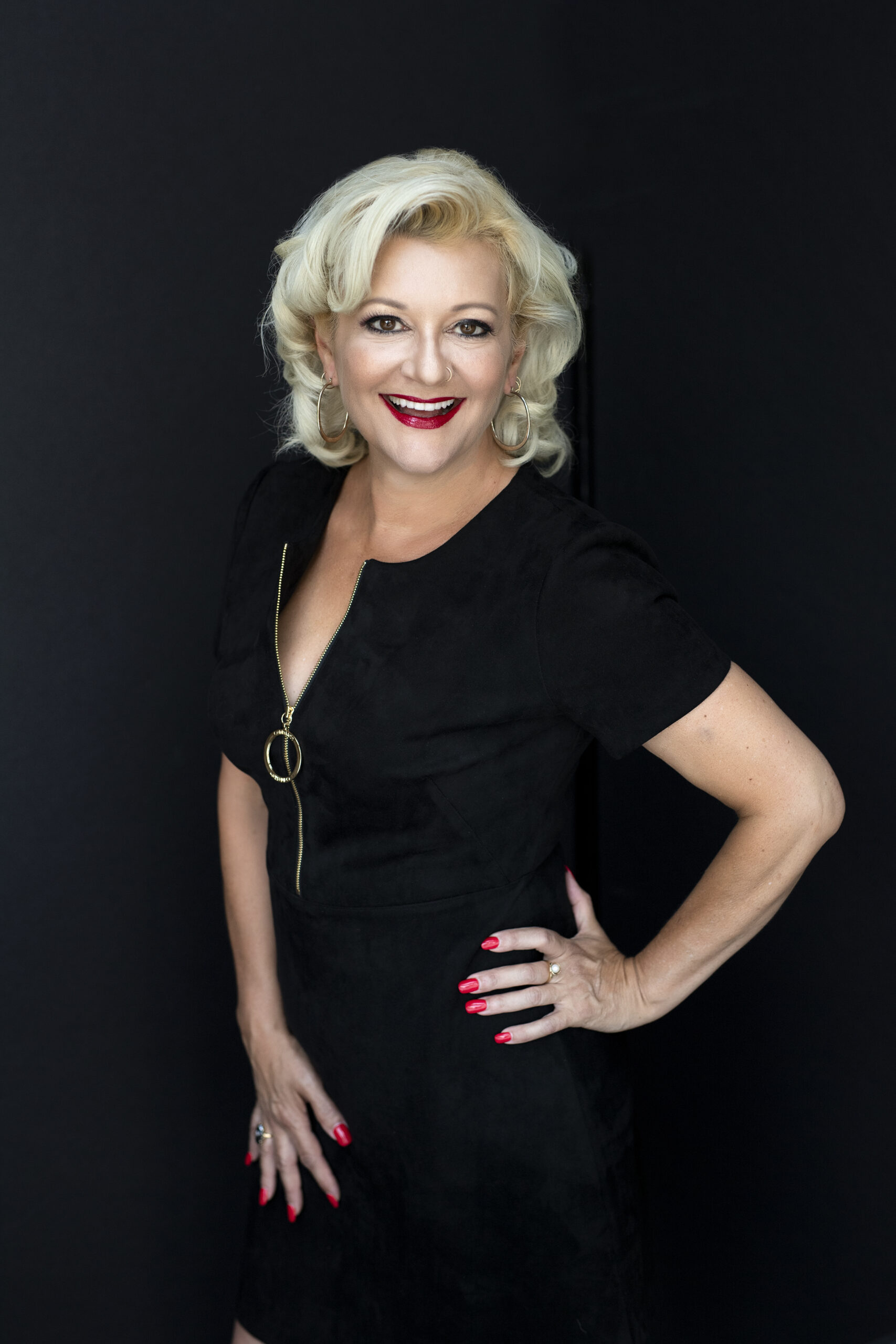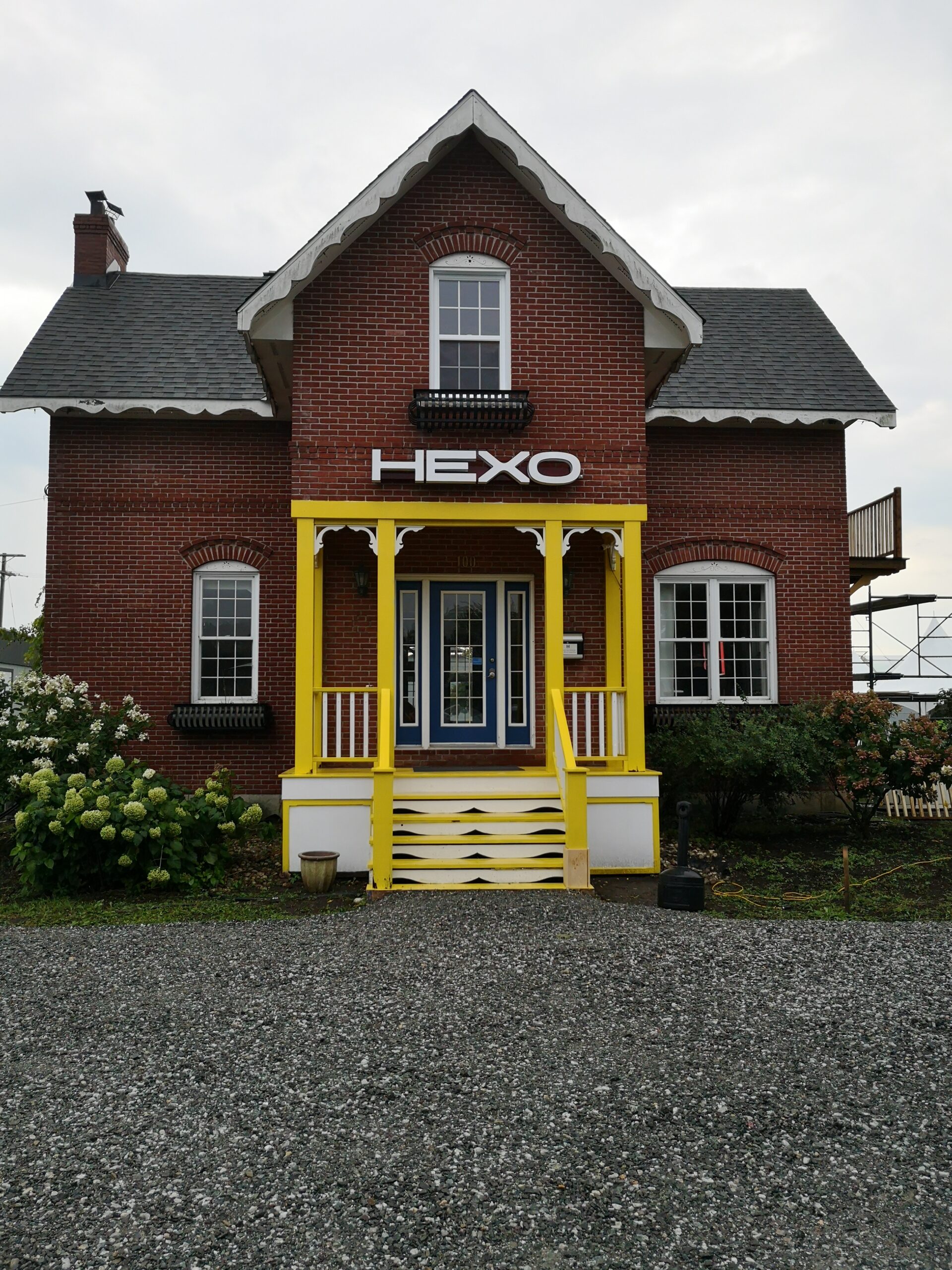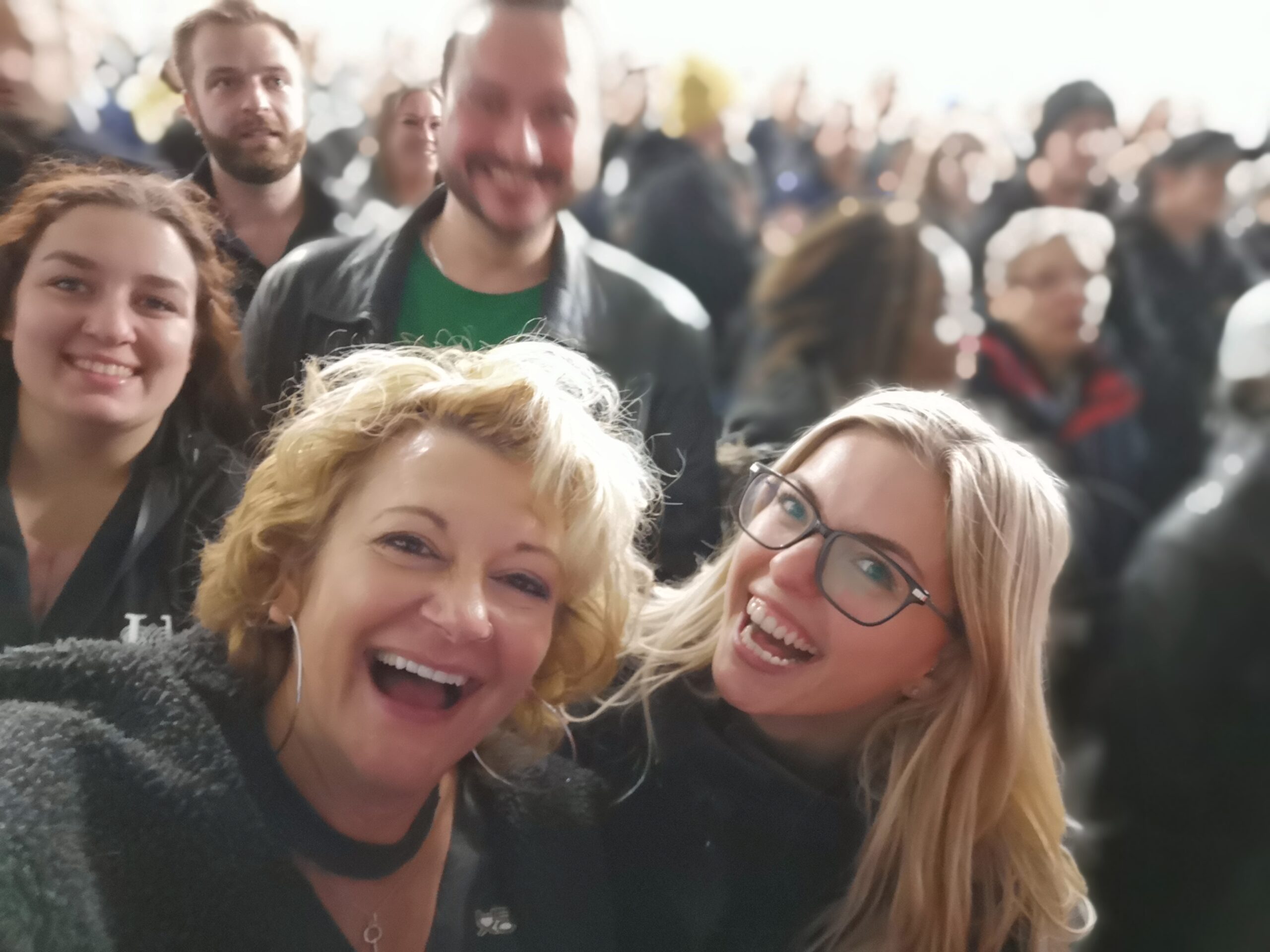Ben Kaplan: When did you first learn about the world of cannabis?
JB: My *first* foray into cannabis was in Grade 10. I was a super academic nerd (I wrote my undergrad thesis on Star Trek, to give you an idea of the depth of nerd I am), but I was trying to be ‘cool.’ I skipped class on a Friday afternoon and went to a friend’s house alone to smoke a fatty.
I wasn’t sure what to do, so after pacing and giving myself a pep talk, I reclined on the couch, blazed up that big boy and smoked nearly all of what I recall as disgustingly skunky and acrid bud. Good thing I was lying down: I ended up so trashed, I hallucinated for two hours. At one point, I staggered to the pantry and choked down a piece of dry bread. (Total novice move, obvi.) It was terrifying and it put me off cannabis for a very, very long time.
Fast forward an entire lifetime to the early summer of 2014. A friend who was a lifelong dope smoker popped by, excited about the Canadian government’s legalization of cannabis for medical use. I scoffed: only a lunatic would get into such a risky industry.
A month later, I was one of those lunatics. I’d just met a bright 29-year-old entrepreneur named Adam Miron, who was hoping to start a luxury pot brand with his equally brilliant brother-in-law, Sébastien St-Louis, also 29. I was immediately hooked and pitched my services as publicist (and later, marketing content strategist and ad hoc corporate historian) for their nascent cannabis company, Hydropothecary, which they renamed HEXO in 2018. They had $35,000, a narrow little basement office in Adam’s house on Spruce Street in Ottawa and not a lot else. No farm, no plants, no staff and no license from Health Canada. But, oh my God, could they hustle.
BK: What attracted you?
JB: To be honest, I wasn’t that interested in weed itself, but I was very interested in a brand-new industry the Federal government was standing up. I mean, a federal government taking on a black market industry? It hadn’t been done before. I’m an entrepreneur, so that really excited me. And, much as I had hesitations about ‘selling weed’ per se, I was keen to be part of the professionals forming the conversation about medical cannabis and its benefits. Canadians had so much to learn and so many stigmas to overcome. As a publicist for Hydropothecary and later as editorial content lead, that was a challenge I couldn’t ignore. I loved every minute of the startup cannabis years and the insanely creative, dynamic and hardworking visionaries it attracted, like Josh Nagel.

BK: You’ve lived so many wild stories. Can you share a memory from the cannabis early days - both a positive and a negative one. Perhaps involve WuTang?
JB: You’re right, there were many, many wild stories. On the downside, no one in the financial industries were interested in backing us. There were a handful of credit unions who would let weed companies sign up for bank accounts – just a bank account to do business! – but the big financial institutions were too arrogant or conservative to see the future value. In the early day, we ran out of money a few times. Once, Adam called everyone up and asked if we’d work half pay or free – everyone agreed, just so we could keep going. Another time, Seb had to cover payroll with his VISA.
On the upside, oh my giddy aunt, those were crazy days. I worked with an incredible group in the marketing department, in a portable we dubbed the Taj (Mahal) because it was then the largest on campus. Everyone in that office was 100% committed to the job. When we did the Never Jaded Tour, it was like we were always on full blast, travelling the country, attending exclusive concerts and working 18-hour days to ensure they were flawless activations AND our compliance to Health Canada was air tight. I remember that, despite the high-quality level we were producing, we were still working in shabby ModSpace offices with no running water (my office was the former toilet, sans hardware). Once, representatives from Wu-Tang came to tour the farm and have a meeting – in a crappy ModSpace on a muddy farm miles from Ottawa, with a very sad plate of crackers and grapes as refreshments because it was so top secret, we had no notice. That was before the executive offices were built and furnished, so it was really the best we could do.
Getting our cannabis oil product, Elixir, certified kosher was another surreal moment. Imagine sitting in a room with a bunch of cannabis enthusiasts and a deeply bearded, very conservative Rabbi. We were all a bit star-struck. He was very curious, open-minded, thoughtful and really, a wonderful advocate for kosher certification. We learned a great deal about why kosher matters not just to the Jewish community, but those who really care about the purity of their foods and medicine. I remember we gave him a spray bottle of Elixir with just MCT oil in it. “Oh, is this the product? Really?” When we said, no, there was no cannabis oil, he said, “Well, maybe I’ll just tell my wife it’s the real thing!” He was a crack up.
BK: Tell me about Adam and Seb. What did they bring to the cannabis world?
JB: Adam had zero interest in cannabis. His sister’s then-boyfriend was growing illegal plants in his flat and it worried Adam very much that she’d be exposed to some criminal charge. Seb pitched the idea to him after he’d spent the Canada Day weekend in 2013 at a cottage on Lac MacGregor in Quebec with a bunch of friends. One of them, Max Cyr, was then working at Health Canada and knew that very few people were submitting applications for a production license under the new ACMPR rules. His offhand remark – “It’s like no one in the country wants to be a millionaire” was the perfect thing to get Seb’s mind going. Within two weeks, he’d pitched to Adam and a week after that, they agreed to give it a go.
BK: What was a typical day like in your life?
JB: For me, it started with a 59-minute commute to the pot farm. The boys bought a working farm in Masson-Angers, in the Gatineau hills, so it was a bit of a hike for everyone except those who lived in the nearby town. In our startup days, we were ‘all hands on deck’, which meant that I’d show up with the handful of people who were the first employees and basically have meetings, tour the facilities and make calls to media. Our first vault for the dried product was literally a secondhand bank vault. I once went down in the bunker to check it out with the guy in charge and when he opened the door, the smell of terpenes and cannabinoids was so pungent, my eyes watered. An hour later, I bumped into Adam outside. “Oh, I know where you’ve been, the smell is rolling off you,” he said. The guy in charge, Justin, had made it a policy of telling the local cops where he worked in case he got pulled over and they could smell the weed on his clothes.
Later, my day would include media tours of the greenhouses, marketing/comms/sales/product meetings, writing about everything from product descriptions to websites and lots and lots of laughter. We were a very happy bunch.
BK: Tell me about your job at that time. What were your metrics? What were you trying to do?
JB: I’d started as publicist, so my job was really to raise awareness, tell the Hydropothecary story (as HEXO was then called), educate journalists and the public, and get the first share of voice. Once we went public, my job changed a bit because there is a lot more oversight on public information, so corporate news was handled by the investor relations people. Over time, my role grew to writing everything for the company, developing brand voice, writing the product descriptions and info for the government agencies, doing the websites, overseeing video production, doing paid media buys and OpEds, organizing speaking engagements at conferences, submitting products for awards. It was about as varied as you can get.

BK: Where were you on 10.17? Do you have a great story?
JB: Here’s the funny thing about 10.17. Everyone in the media and those interested in legalization day kept asking us if we’d celebrate by lighting up and burning one down, as if there’d be a big blue cloud of smoke over Masson-Angers that day. It amazed me that people could be so facile! We were a billion dollar company, trying to get a bead on how legalization would roll out, if Canadians were going to swap from ‘their guy’ to buying weed from the retailers AND trying to get a sense of what our competition was putting out there. So, no, we weren’t all high on anything but adrenaline and excitement. However, we DID buy a shit ton of weed and cannabis products online that day. Everyone in the Taj were given the corporate VISA number and told to buy as much competitor product as we could, from as many sources as possible. The idea was that we would have the things shipped to our homes, track how long it took and then unbox at work to see what the competitions package and products were like. Some were amazing, some were very poor. We also attended an all-hands meeting in the afternoon, where we met the head honchos from Molson Coors Canada who were partnering with us on Truss cannabis beverages. Ironically, we all got a case of beer as a gift, with Seb sternly telling us “Don’t drink and drive.”
BK: What was your favourite HEXO product? What’s your favourite today?
JB: I’ve tried a few of the CBD products and my standout favourite is Elixir. It’s easy to use, the peppermint tastes great and it works fast on anxiety and inflammation. We won a Canadian Cannabis Award for that one and it was well-deserved. I also used to use Decarb CBD a lot for making jerky and fruit leather in my dehydrator. It was a bit more cannabis-forward, but that jerky proved to be very popular.
BK: Talk about the writing of the book, the first to really examine the early days of legal Canadian weed. How'd you work?
JB: Writing the book was quite separate from my work at HEXO. It was more of a side hustle that Adam and I cooked up. He’d said to me quite early, “We should be writing this shit down” and of course, as a journalist, I write everything down anyway. So we’d spend hours and hours afterwork, on weekends and any free time we had scoping the story line out on a spreadsheet. That framework gave me a great approach to who I needed to interview and how that particularly story should be weighted in the narrative. There were MANY stories we had to leave out for space or another book! I’d interview people and do research as I went. Some things needed more oversight than others – I’m not an expert in financial raises or the retail financial markets – but my background in journalism meant I knew where to look. At one point, I hit a mental roadblock with the narrative structure and couldn’t get my head around it. My best friend, Measha Brueggergosman, was recording and rehearsing at the Banff Centre for Arts and Creativity at the time and invited me to come out. So I spent more than a week in the Leyton Artists’ Colony, in Painter House, while she was off elsewhere on campus, in the Peter Lougheed studio. That big house halfway up the mountain was exactly the right amount of space I needed to sort out my head. I remember Measha downstairs in the living room, going over and over the same section of music with her band. Normally, I have to work in silence, but that repetitive cadence somehow helped me unpick the problem I had. When she left at the end of that first day and shouted up the stairs, “You’re on your own, see you at supper!” I had resolved the issue. I went into productive overdrive and wrote three chapters in a week. It helped that, everyday, I hiked up the side of the mountain past the artists’ colony buildings, thinking about Margaret Atwood and all the others who had worked there. My favourite as a small fishing boat made over into accommodation, perched in the woods. It’s where Yann Martel wrote Life of Pi.
BK: We’re going to share an excerpt from your book on our website. Can you share one more anecdote that showed how quickly things moved in the wild world of legalized weed?
JB: Sure. We had a product call Fleur de Lune – it was an MCT-based microdose of THC/CBD blend intended for intimate use. There had been anecdotal evidence that it heightened the female orgasm and, when a bit of THC oil was put on the end of a tampon, it could help with period pains or discomfort from endometriosis. There hadn’t been much attention paid to how women could benefit, so we were very excited. But we couldn’t test out the product before we went to market, given Health Canada’s guidelines. So I got to work researching and *ahem* trying it out. At that point, I had this tiny IKEA desk I was using, in the middle of the Taj. I remember one of my colleagues peering over my shoulder as I wrote about using the oil anally – something I NEVER in 30 years in journalism thought I’d be writing. I worked every day on the product descriptions, content for the website, instructions, you name it. The design team came up with some really beautiful and clever images for ads. We submitted it all to compliance – and had to cut everything out the next week. It was too “lifestyle” for Health Canada. All that work, pfft. There were many examples of how quickly things changed – we’d spend time and money preparing some glorious campaign only to have Health Canada regulations change or expand. It was maddening, but also par for the course back then.

BK: Take us up to date with you now. Are you still working in cannabis?
JB: These days, I’m really vibing on brand development and doing marketing communications for a huge variety of clients. It’s another kind of storytelling that I’ve discovered I really love. I am also working with Protonify, a Cannabis 3.0 company that will be making a huge mark on the use of THCa isolate as a shelf-stable active pharmaceutical ingredient or API. This is where good science will also impact things like the opioid crisis.
BK: WHERE CAN WE BUY YOUR BOOK?!
JB: The book is available online through Chapters/Indigo, Amazon.ca or by ordering it through your local bookstore. I discovered this week it’s also on Audible–read by a guy. It’s bizarre to hear the words that have been in my head for so many years being read aloud by someone else.
Share
The pioneers in legal weed never can get over the…
Between 1999 and 2002, Lenny Kravitz won four straight Grammy…
Canna Cabana has a huge stock of great legal cannabis…
The Beaches are Jordan Miller, Kylie Miller, Leandra Earl, and…






